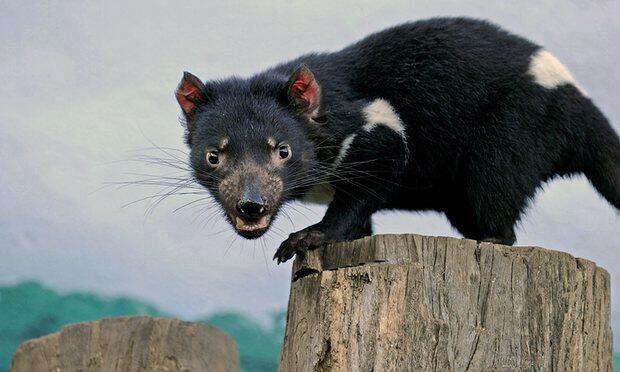A controversial proposal to halve the insurance population of disease-freeTasmanian devils has been scrapped.
But the state government said it would continue to support the staged release of some of the animals as part of a vaccine-testing program.
Numbers of the endangered marsupials have plummeted in the past 20 years due to the rapid spread of the devil facial tumour disease, a fatal cancer transmitted from devil to devil through bites.
About 600 disease-free animals are kept in captivity at zoos, wildlife parks and sanctuaries in Tasmania and on mainland Australia, a genetically diverse “insurance population” kept against the risk the animals go extinct in the wild.
A draft plan circulated by the government-run Save the Tasmanian Devil program with the Zoo and Aquarium Association suggested the insurance population could be reduced to 350 animals by 2020.
It also suggested the program release more devils into the wild to provide greater genetic diversity to wild populations, most of which are heavily affected by the facial tumour disease.
The Tasmanian environment minister, Matt Groom, ruled out the first option.
“There will be no slashing of the devil insurance population under my watch,” Groom said in Hobart on Thursday.
“The Tasmanian government is committed to maintaining a genuine insurance population with as close to 100% genetic diversity as is possible.”
Groom said the government would continue to support a program run by the University of Tasmania’s Menzies Institute, to release a limited number of vaccinated devils into wild populations. The devils have been inoculated with a trial vaccine and are regularly monitored to test its effectiveness.
The program is expensive: it costs between $25,000 and $30,000 to vaccinate a devil and four of the 20 released into Narawntapu national park in October were killed by a car in the first few weeks.
Groom said the vaccine program was “an important next step in securing a future for the Tasmanian devil where it belongs in the wild in Tasmania”.
Devils are the only species of endemic carnivorous marsupial left on the island state after the extinctions of the thylacine, or Tasmanian tiger, in the 1930s. The last captive thylacine, named Benjamin, died in a Hobart zoo in 1936.
Populations in devil colonies affected by the disease have reduced by as much as 95% since it was first documented in 1996, and in December scientists flagged the emergence of a second, genetically different strain of the disease in wild devil populations south of Hobart.
“We don’t know yet whether devils will go extinct in the wild, persist in the wild, or indeed recover,” David Pemberton, manager of the Save the Tasmanian Devil Program, told the ABC’s AM program.
“So what we’re doing is trying to develop techniques for the first two options: if they persist then we’re going to have to augment the genetic diversity, et cetera; if they go extinct, well, it’s actually quite easy because you just put them back.
“At the moment they are persisting across the island.”
A number of wildlife centre managers who house part of the devil insurance population raised concerns with the proposal, saying the species was in a more precarious position now than when the insurance program was set up in 2008.
Pemberton dismissed suggestions it would be unethical to release healthy animals into a disease-prone area, saying it was “quite difficult to have them happy in captivity”.
He said boosting the wild population would increase the chance of “random mutations coming up with evolutionary solutions”.
Source: The Guardian











